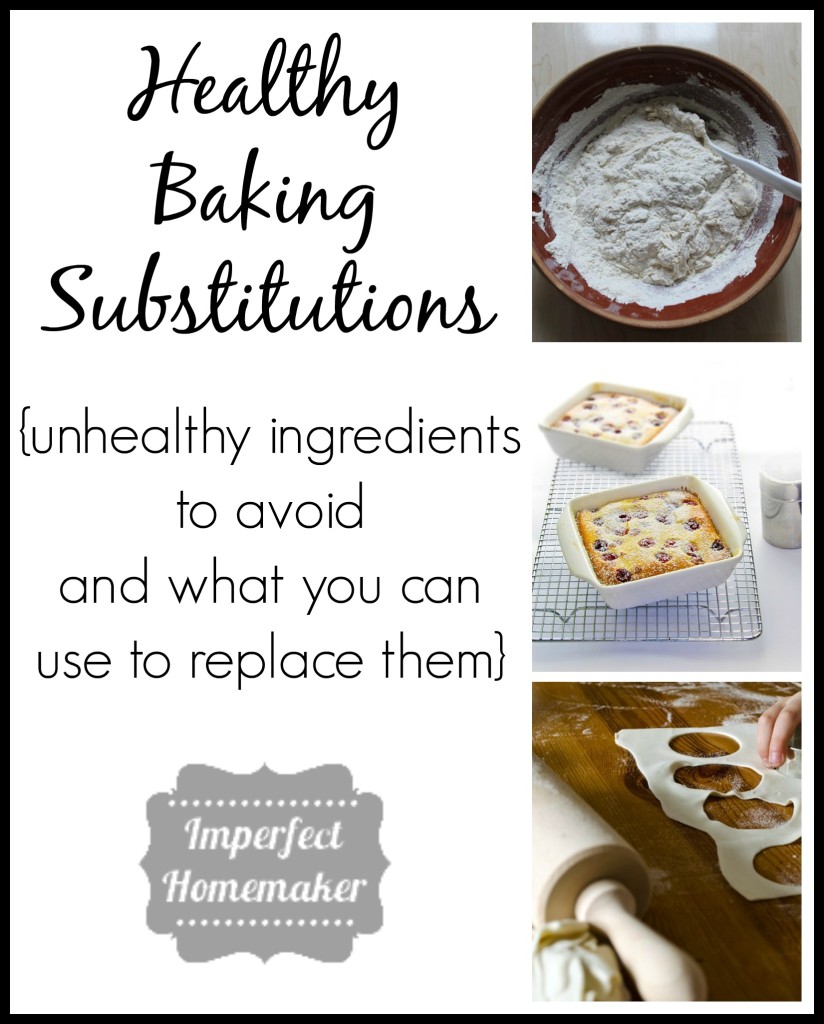Healthy Baking Substitutions
Many of you are likely doing quite a bit of baking this time of year. Here are some Healthy Baking Substitutions you can use to make your goodies more healthy!
Sugar
Replace white sugar with the following:
- Organic pure cane sugar (rapadura) or sucanat (1:1 ratio. Also, you can gradually reduce the amount of sugar the recipe calls for until you get used to less sugar. You should be able to get used to the total amount of sugar being cut by as much as half.)
- Honey (Use 1/2 to 3/4 cup for every cup of sugar. Reduce liquids by 1/4 cup for each cup of honey used.)
- Maple Syrup (Use 3/4 cup for every cup of sugar. Reduce liquids by 3 tablespoons for each cup of maple syrup.)
- Applesauce (Cut the sugar in half, then replace the missing half with applesauce plus another 1/3 the amount. Example: if the recipe calls for 1 cup of sugar, use 1/2 cup of sugar and 1/2 cup of applesauce plus another 1/3 cup of applesauce. Reduce liquids by 1/4 cup for every cup of applesauce you add.)
Butter
Although real butter is not an unhealthy fat, you may want to replace up to half the butter in your baking recipes. I use these substitutions often for cost savings or to add a bigger variety of nutrition. (You can also use these substitutions if you can't have dairy.) You can use the following substitutions:
- Applesauce
- Plain Yogurt
- Coconut Oil
- Mashed Avocado
Vegetable Oil, Crisco, or Margarine
Please, please do not bake with these products! These are trans fats, and your body does not even recognize them as food, but will store them as toxins instead! Use the following substitutions:
- Real butter
- Applesauce
- Plain Yogurt
- Coconut Oil
Chocolate Chips
Most chocolate chips are made with GMO sugar and soy lecithin, which are both harmful to your body. Instead, use homemade chocolate chips, an organic chocolate bar cut into chunks or Enjoy Life's chocolate chips (I find them cheapest at Vitacost.)
Milk
This one is a little bit of an advanced step if you're not used to it. I do not drink store-bought milk, but instead use raw milk and the cream off it for any recipes that use milk, cream, evaporated milk, buttermilk, etc. If you're not ready to use raw milk/can't afford it, etc., at least try to purchase milk that is antibiotic and hormone free. (If you can't have dairy, you can substitute almond milk or rice milk. Soy milk is not the best option – here's why.)
Eggs
Another advanced step is to make sure you are using farm fresh eggs. The nutritional content is about 1000% higher than store-bought eggs, and in fact you may be harming your system with GMO's when you eat eggs from commercial chickens. If you're out of eggs or have allergies, you can substitute ground flax seed and water. All you need to do is finely grind some flax seeds in a heavy-duty blender and use 1 Tbsp. ground flaxseed mixed with 3 Tbsp. of water for each egg you need to replace.
Flour
Today's flour (even whole wheat flour) is a completely different product than it was years ago. It is basically devoid of nutrition, and actually contains phytic acid which steals nutrients from your body. So in a way it has negative nutrition. If you can find a resource for heirloom wheat (such as Tropical Traditions) you will be getting a product that has not been altered through hybridization. If you cannot get quality heirloom wheat, try to avoid recipes with wheat as much as possible. Instead opt for gluten-free recipes using oat flour, almond flour, coconut flour, bean flour, etc.

